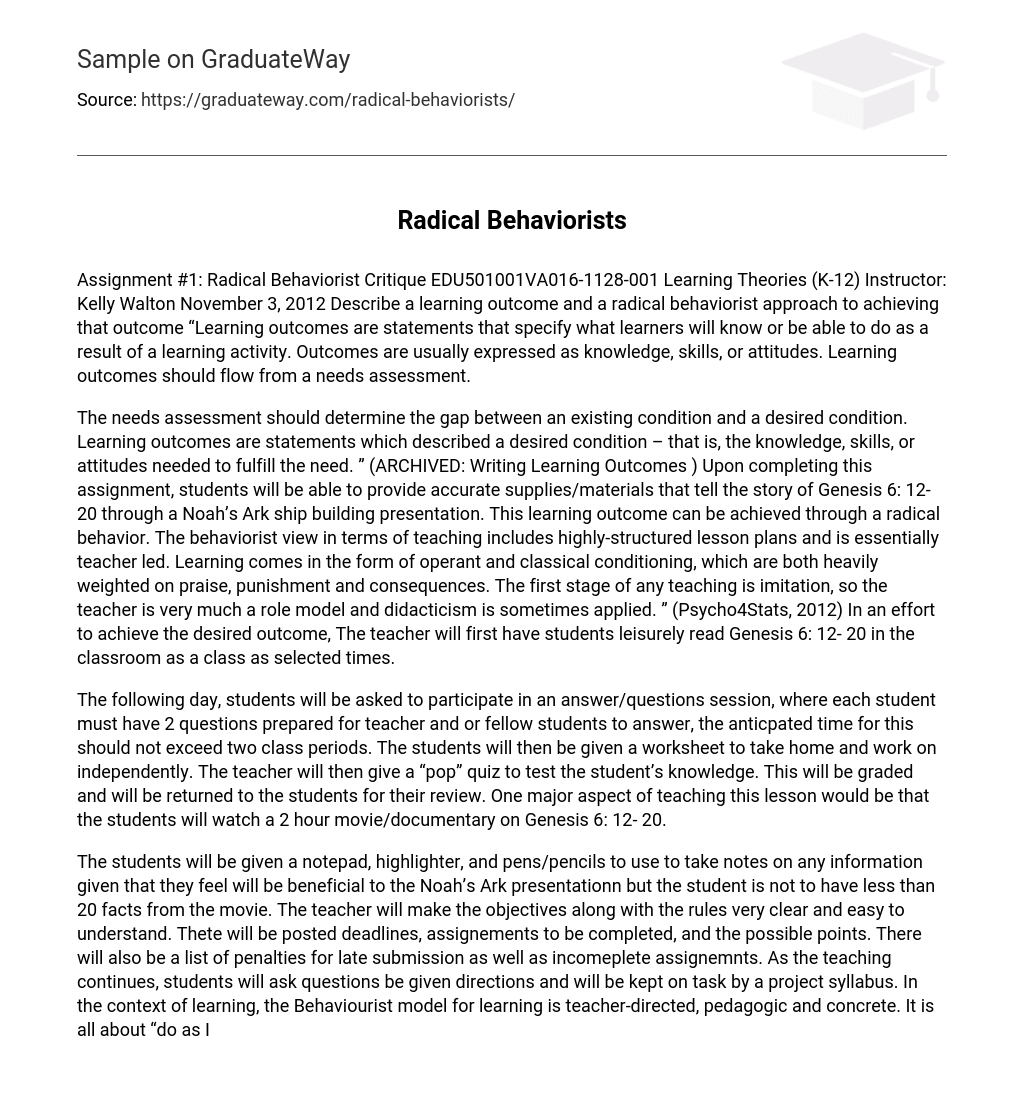In the behaviorist approach, there is little time given to the experiences of the senses. Critique the radical behaviorist approach from the perspective of meaningful learning and schema theory. “Types of learning that Ausubel examined include: reception learning vs. discovery learning and the rote learning processes, such as memorization. However, to make these types of learning meaningful, three things must occur: The learner must employ a meaningful earning set to any learning task. The material to be learned must be potentially meaningful.
The most important condition for meaningful learning is what learners already know and how that knowledge relates to what they are asked to learn a schema is a data structure for representing the generic concepts stored in memory. And, within schema, there are pieces known as schematas that form the foundation of an individual’s schema. ” (Allen, 2012)
A meaningful learngin exercise would be to have the students in an open forum discuss what they know about the story of Noah’s Ark. The students would also be asked to name anyspecifics, i. e. how many of each animal, measuremetns, and the “why”. This should actually take place before any other lesson material is discussed. Incorporating schema would simply consist of the teacher explaining how we prepare for fires in the home. We must have fire extinguishers tested and available, along with the proper escape route planned and mapped out for everyone and from each room. The teacher used this “fire” scenario to relate the story of how important it is to do what you are told and be prepated. Critique the radical behaviorist approach from the perspective of situated cognition theory.
Situation cognition theory is based off of situation that one is placed in rather than a base of knowledge. Situation cognition would be very difficult to use in this lesson. The radical behaviorist approach is very good for this type of lesson. If a teacher wants to try to incorporate situated cognition theory, this can be done by students recalling when they were told things by parents to do and was not given specific reasons as to why they were supposed to do a specific task. Create a modified approach to achieving the desired learning outcome based on the three criticisms above.
Using the three criticisms above, the desired learning outcome would be easy to understand and achievable by all the students. To begin, situated cognition theory would have to reign at the beginning of the lesson. This would be inserted after the objectives have been clearly stated and the teacher has told students what the student should know by the end of the lesson. Next, the cognitive information processing would come into place. The teacher would bring several materials/supplies to the classroom to allow the children to gain a sense of what is needed to complete the lesson and an understanding of the lesson.
The students would feel the objects and even smell the different woods. They could also see how they would begin to construct their ark based off of trying to assemble supplies. Lastly but not least, the teacher will be able to insert the meaningful lesson and schema theories. The teacher will have each student to go home and make a map of how to escape from their bedrooms in case of a fire. The students will also have to make a list of all needed materials. The students would return to school the following day and the teacher would explain how the lesson relates to Noah’s Ark.
The teacher would then explain how they were told to do something in preparation of a fire and they did it withour questioning the assignment. Based on the above criticisms, the student will be able to recal linfromation learned during the course of teaching the lesson.. Th student will be able to construct Noah’s ark and discuss all the details involve in Genedis.
References
- Allen, B. (2012, January 12). Meaningful Learning and Schema Theory – Chapter 4. Retrieved November 3, 2012, from Brett Allen’s Blogspot: http://epfr515brettallen. blogspot. com/2012/01/meaningful-learning-and-schema-theory. tml
- Comparative Organizer: Learning Theories . (2012, October 24). Retrieved November 3, 2012
- Shirley, R. (2009, May 7). The Behaviourist Approach to Teaching in Class. Retrieved November 2, 2012, from Suite101: http://suite101. com/article/the-behaviourist-approach-to-teaching-in-class-a115748





